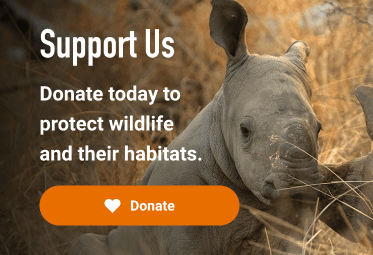Monitoring seagrass in Thailand, Pleiades © CNES 2025 Distribution Airbus DS

Satellites for Biodiversity Award -Round 4
The Satellites for Biodiversity Award opens its fourth call, helping conservationists apply cutting-edge geospatial tools, including very high-resolution (VHR) satellite imagery, artificial intelligence (AI) and in-situ data to reveal critical details of our changing planet.
The combination of geospatial data and artificial intelligence is part of a rapidly growing field known as GeoAI, which is crucial for environmental decision-making, as well as informing global targets, policies and actions.
Accuracy has been a major challenge for the application of early mapping algorithms to lower-resolution imagery, where, in some situations, outputs have resulted in skewed assessments, misguided priorities and wasted efforts. With advances in computing, AI Foundation Models, training strategies, and collaboration, a more comprehensive toolbox for mapping and monitoring the planet is emerging.
What you can win:
- Access to Pléiades and Pléiades Neo satellite data, including HD15
- $6,000 in funding
- Complimentary ArcGIS Pro from ESRI for advanced mapping and analysis
- Ongoing mentorship and technical support from CCF and Airbus geospatial experts
- Publication of results in the Ecosystem Insight Hub
Award open for global applications:
Run by the Connected Conservation Foundation and the Airbus Foundation, this award provides conservationists with access to Airbus’s state-of-the-art satellites, including AI-enhanced Pléiades Neo HD15 imagery, delivering sharper, artefact-free views.
This grant can help map habitats and biodiversity in fine detail, build better training data sets, track land-use change at scale, and guide actionable strategies for conflict hotspots, restoration, and ecosystem protection.
Grant focus areas:
We encourage all applications to integrate participation from local communities and meet one of these criteria:
State of Species
Projects focusing on the state of species abundance, distribution and extinction risks to threats from environmental, social or commercial pressures. These projects assess threat level (IUCN Red List threat level), population sizes and extinction drivers, including changes in habitat area and quality.
Invasive Species
Projects investigating introducing, spreading and managing invasive plant or animal species.
Ecosystem Management
Projects that track and inform management practices and operations, especially within or near biodiversity-sensitive areas. Including early-warning solutions that enable a response to mitigate conservation issues.
Ecosystem Connectivity
Projects examining changes to “spatial configuration,” “structural connectivity,” and “functionality connectivity” - focusing on maintaining or enhancing the physical, biological and ecological linkages within and between ecosystems.
Ecosystem Conversion and Restoration
Projects identifying and analysing the change in natural spaces to managed systems or built-up areas, as well as efforts to restore areas to their natural state.
Key dates:
- Applications open: 29 September 2025
- Applications close: 23:59 on 19 December 2025
- Winners announced: March 2026
How to apply:
Complete our lightweight application form here before the deadline. APPLY HERE.
Previous winners:
15 ambitious conservation projects across 13 countries are now supported through this partnership. View all winning projects here.
Any other questions?
Please contact info@connectedconservation.foundation
(C) GHAGHARA, PLÉIADES NEO © AIRBUS DS 2025
This award is designed to boost the capabilities available to conservationists and local communities. By pairing our advanced satellite imagery with their on-the-ground knowledge, we’re giving them the precise tools and clear evidence they need to protect vulnerable ecosystems and species, driving real, tangible impact.
Hania Tabet, Airbus Head of Social Value & Airbus Foundation Director
Support Us
Donate today to help save species and their habitats.
Join the thousands of people like you who have stepped up to support our critical conservation work around the world.

